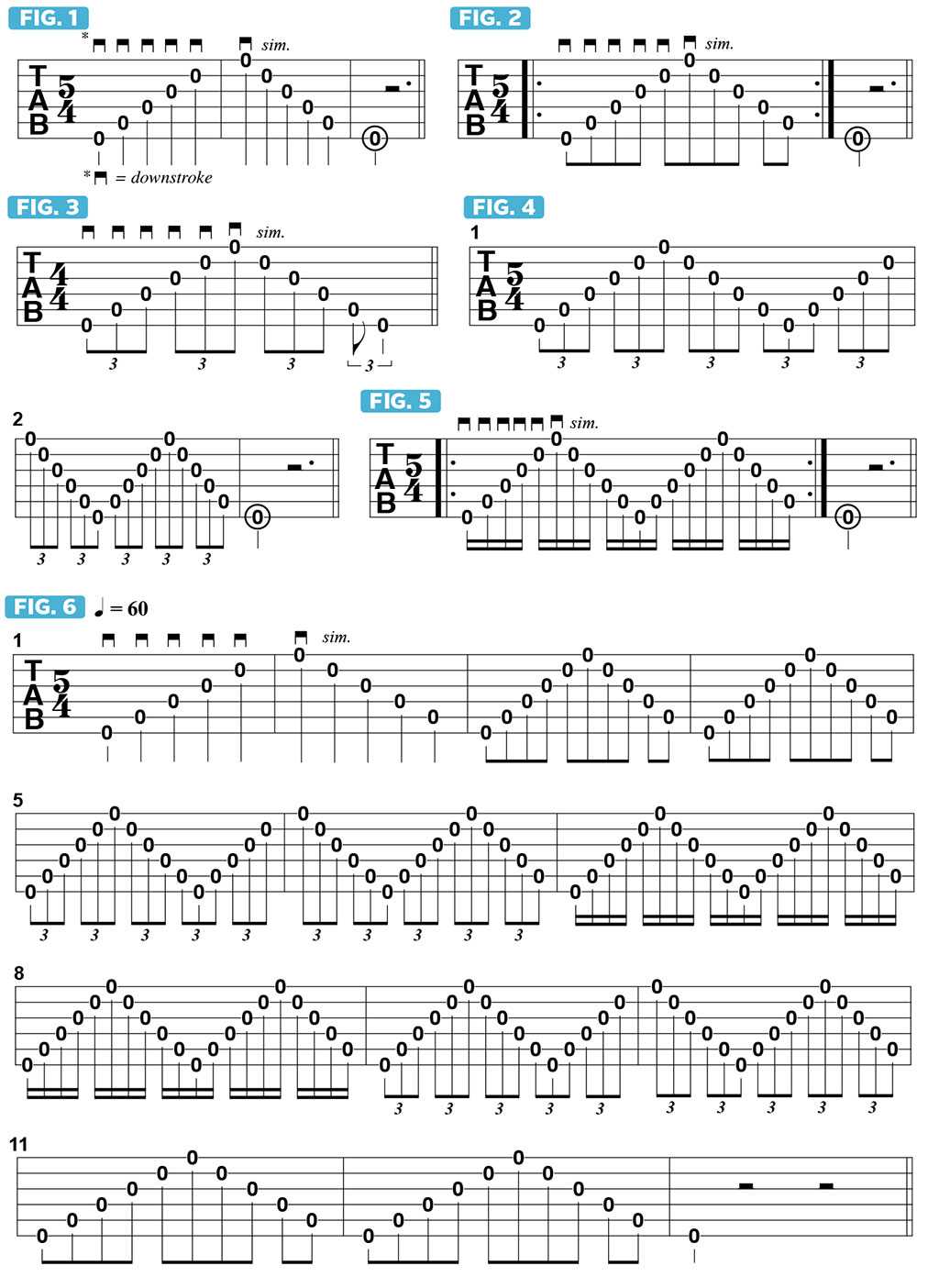Improve your rhythm playing with these pick-hand warm-up techniques
6 exercises to get you in shape and sharpen up your acoustic skills
In my previous column on warming up, we focused on the fret hand, with four chromatically ascending notes played per string, starting from the 6th string and moving across the fretboard to the 1st string and back. I’d now like to specifically address pick-hand technique, focusing on the cyclical aspect of rhythm while utilizing the open strings.
The exercises presented here are built from open strings because I don’t want to focus on anything regarding the fret hand; the exercises are designed to create a clear picture of moving through four rhythmic subdivisions: quarter notes, eighth notes, eighth-note triplets and 16th notes.
Western music has not, for the most part, rooted itself in the cyclical aspects of rhythm the way that Indian music has, as the musical structures heard in the latter are profoundly anchored in them. In a lot of my early practicing, I would try to keep things in 4/4 time, no matter the rhythm of the line, and so I’d often have to add or subtract a note to make the phrases fit the time signature.
No one ever told me to continue with the same rhythm until you ended up back on the downbeat of 'one', no matter how many bars it might take to get there, which is dictated by the phrasing of the rhythm. However, this is very common in Indian music, so I incorporated that approach into my studies.
In FIGURE 1, I play a series of 10 quarter notes, moving sequentially from the 6th string to the 1st string and then back down; we end up with 10 notes because the 11th note would be the open low E again, at which point we start over.
So, as shown in FIGURE 2, played as eighth notes, it becomes a repeating 10-note pattern.

FIGURE 3 illustrates this same openstring pattern but played in a rhythm of eighth-note triplets. In FIGURE 4, we see that the pattern must be played three times before we end up back on the downbeat of “one” on the open low E note.
FIGURE 5 illustrates the same pattern as played as 16th notes. So, in bar 1, we play up and down twice, in 5/4 meter, landing back on the open 6th string in bar 2. Keep in mind that the pattern itself is played four times here.
The goal here is to not look at the guitar. Instead, focus your eyes on some other spot in the room while you play. When you do this, you can visualize in your mind and feel what your pick hand is doing while concentrating on hitting the right string. It’s a good idea to use a metronome for this exercise; so set yours to quarter note = 60 and tap your foot along with the metronome.
Then play FIGURE 6, which begins with quarter notes and then progresses through eighth notes, eighth-note triplets and 16th notes and then back through the same rhythmic subdivisions in reverse order.
They may seem like simple exercises, but it will take tremendous discipline to play through these drills with rhythmic precision. Once you have it all down, try gradually increasing the tempo.
Stéphane Wrembel is a world-renowned US-based French guitarist whose work has appeared in several soundtracks, including Woody Allen's Midnight in Paris. He hosts the annual Django A Gogo festival and releases a new Django Experiment album every January. Django Experiment IV is out now.
Get The Pick Newsletter
All the latest guitar news, interviews, lessons, reviews, deals and more, direct to your inbox!









![Joe Bonamassa [left] wears a deep blue suit and polka-dotted shirt and plays his green refin Strat; the late Irish blues legend Rory Gallagher [right] screams and inflicts some punishment on his heavily worn number one Stratocaster.](https://cdn.mos.cms.futurecdn.net/cw28h7UBcTVfTLs7p7eiLe.jpg)
